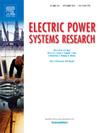Ultra-short-term Wind power prediction algorithm based on bidirectional neural controlled differential equations
IF 3.3
3区 工程技术
Q2 ENGINEERING, ELECTRICAL & ELECTRONIC
引用次数: 0
Abstract
Against the backdrop of the continuous growth of the new energy electricity trading market, improving the accuracy of ultra-short-term electricity forecasting and reducing lag are crucial for new energy enterprises. This article proposes a ultra-short-term wind power prediction model (Bi-NDCE-UPF) based on bidirectional neural control differential equations to explore ways to improve prediction accuracy and lag. It has two innovative points: 1. A bidirectional neural controllable ordinary differential model for ultra-short-term power forecasting has been proposed. Compared with Bi-GRU and Bi-LSTM, this model has significantly improved the accuracy and delay of the third point in ultra-short-term forecasting. 2. A prediction delay mitigation structure has been designed to effectively alleviate the lag and distortion of prediction data. This algorithm has been validated in four wind farms in central China and has unique advantages. We use four metrics to evaluate all models: MSE, MAE, Dynamic Time Warping (DTW), and Time Distortion Index (TDI). Compared with Bi-GRU, Bi-LSTM, and CNN-LSTM, the text model has significantly improved in terms of MSE and DTW. Compared with DLlinear and PatchTST models, the DTW and TDI models in this paper have better advantages.
求助全文
约1分钟内获得全文
求助全文
来源期刊

Electric Power Systems Research
工程技术-工程:电子与电气
CiteScore
7.50
自引率
17.90%
发文量
963
审稿时长
3.8 months
期刊介绍:
Electric Power Systems Research is an international medium for the publication of original papers concerned with the generation, transmission, distribution and utilization of electrical energy. The journal aims at presenting important results of work in this field, whether in the form of applied research, development of new procedures or components, orginal application of existing knowledge or new designapproaches. The scope of Electric Power Systems Research is broad, encompassing all aspects of electric power systems. The following list of topics is not intended to be exhaustive, but rather to indicate topics that fall within the journal purview.
• Generation techniques ranging from advances in conventional electromechanical methods, through nuclear power generation, to renewable energy generation.
• Transmission, spanning the broad area from UHV (ac and dc) to network operation and protection, line routing and design.
• Substation work: equipment design, protection and control systems.
• Distribution techniques, equipment development, and smart grids.
• The utilization area from energy efficiency to distributed load levelling techniques.
• Systems studies including control techniques, planning, optimization methods, stability, security assessment and insulation coordination.
 求助内容:
求助内容: 应助结果提醒方式:
应助结果提醒方式:


